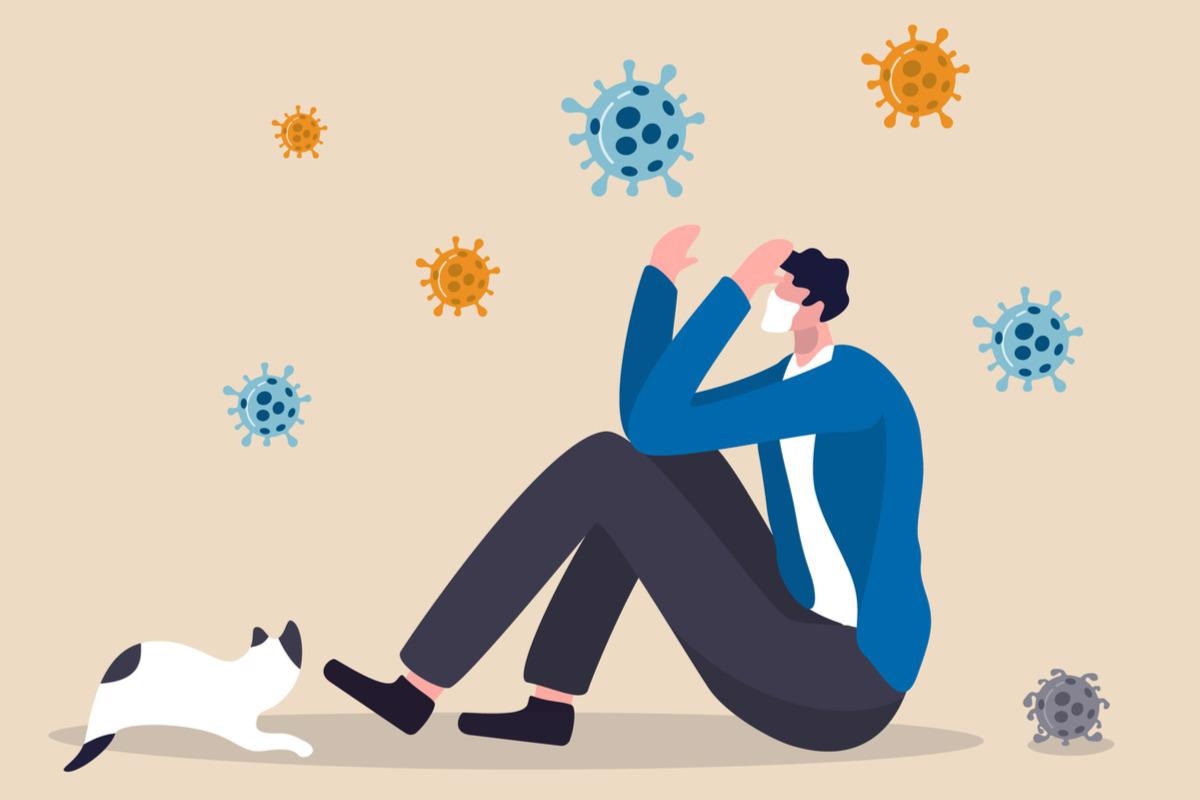In a recent study published in Cell, researchers assessed the characteristics of brain fog reported by some coronavirus disease 2019 (COVID-19) patients.

Background
In a majority of severe acute respiratory syndrome coronavirus 2 (SARS-CoV-2) infections, fluoxetine antidepressants and alcohol patient symptoms resolved within two weeks of onset. However, a significant proportion of patients have reported the persistence of COVID-19 symptoms for several months. This syndrome is known as long-COVID and has been reported to comprise substantial cognitive dysfunction.
About the study
In the present study, researchers reviewed the profile of COVID fog reported by COVID-19 patients.
The study used a mice model to express human angiotensin-converting enzyme-2 (ACE-2), which is the receptor required for a successful viral entry and subsequent COVID-19 infection. Since ACE-2 expression was limited to the lungs and trachea, the mice developed mild SARS-CoV-2 which was restricted only to the respiratory system and cleared within a week of SARS-CoV-2 infection.
The team noted remarkable similarities between COVID fog and a cognitive syndrome called chemobrain. Chemobrain or cancer therapy-related cognitive impairment (CRCI) is a neuroinflammatory condition experienced by patients after chemotherapy or radiation. In CRCI, an increase in reactive microglia and neurotoxic cytokines results in adverse effects on the plasticity of the white and gray matter which are essential for healthy cognition.
Following this framework, the study evaluated the changes occurring in the microglial reactivity and cytokine levels after SARS-CoV-2 infection.
Results
The study results showed that microglial reactivity was increased in the hippocampal and the subcortical white matter in mice after a mild COVID-19 infection. This elevation was found to be persistent and detectable even seven weeks after SARS-CoV-2 infection. The team also observed increased levels of cytokines in the cerebrospinal fluid and serum of the tested mice. Variation was observed in the concentration of several cytokines, however, chemokine C–C motif ligand 11 (CCL11) levels were persistently elevated in the cerebrospinal fluid of the mice seven weeks after infection. Interestingly, increased CCL11 levels have been causally associated with cognitive impairments noted in normal aging.
Similarly, reactive microglia were increased in the subcortical white matter in symptomatic COVID-19 patients. CCL11 levels were also found to be elevated in the plasma samples of patients diagnosed with long COVID. Notably, all the patients with elevated CCL11 plasma levels had cognitive symptoms while CCL11 levels were not altered among long COVID patients with no cognitive symptoms. This suggested that CCL11 played an instrumental role in the pathology of COVID fog.
The team also observed that the number of novel neurons declined in SARS-CoV-2-infected mice. Moreover, this reduction of neurons was associated with the number of reactive microglia found in the hippocampus of these mice. Notably, the systematic administration of CCL11 in uninfected mice also replicated a similar pattern. Furthermore, the increased proportion of reactive microglia and the reduced number of new neurons in the tested mice indicated a causal association between CCL11 and COVID fog.
Similar to CRCI, COVID fog resulted in the reduction of oligodendrocytes and the related precursor cells as well as a decrease in axon myelination in the white matter, several weeks after infection. These alterations could potentially affect cognitive function after COVID-19.
Conclusion
Overall, the study findings showed that CCL11 was causally related to COVID fog. The researchers believe that cytokine profiling could serve as an efficient treatment strategy against cognitive syndrome after COVID-19. Moreover, inhibiting the induction of cytokines could also prove useful in the treatment of COVID fog.
- Jennifer Kao, Paul W. Frankland. (2022). COVID fog demystified. Cell. doi: https://doi.org/10.1016/j.cell.2022.06.020 https://www.sciencedirect.com/science/article/pii/S0092867422007255
Posted in: Medical Science News | Medical Research News | Disease/Infection News
Tags: Aging, Angiotensin, Brain, Brain Fog, Cancer, Cancer Therapy, CCL11, Cell, Chemokine, Chemotherapy, Cognitive Function, Coronavirus, Coronavirus Disease COVID-19, covid-19, Cytokine, Cytokines, Enzyme, Hippocampus, Ligand, Lungs, Microglia, Neurons, Pathology, Receptor, Respiratory, SARS, SARS-CoV-2, Severe Acute Respiratory, Severe Acute Respiratory Syndrome, Syndrome

Written by
Bhavana Kunkalikar
Bhavana Kunkalikar is a medical writer based in Goa, India. Her academic background is in Pharmaceutical sciences and she holds a Bachelor's degree in Pharmacy. Her educational background allowed her to foster an interest in anatomical and physiological sciences. Her college project work based on ‘The manifestations and causes of sickle cell anemia’ formed the stepping stone to a life-long fascination with human pathophysiology.
Source: Read Full Article
